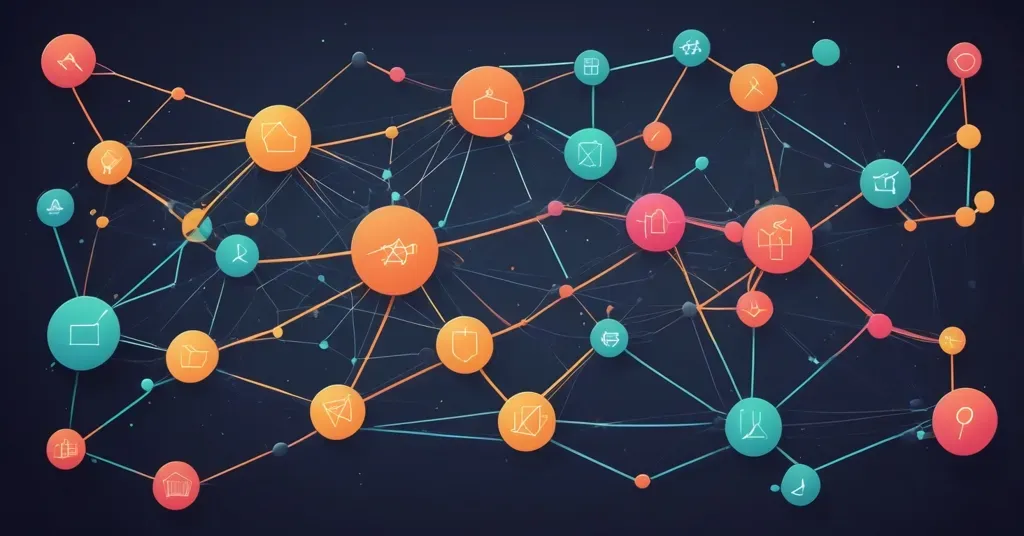
Autonomy in Education: Empowering Self-Organized Teams for Exponential Growth
Self-organized teaching teams, which represent a shift from traditional departmental structures to more flexible, interdisciplinary units, can lead to increased innovation and improved educational outcomes.
Autonomy, a key attribute of exponential organizations, involves the use of self-organized, multi-disciplinary teams operating with decentralized authority. In educational settings, this principle can be applied to staff, students, and even external collaborators, providing them with the freedom to operate more independently. This approach offers educational institutions greater potential for exponential growth and innovation.
The Concept of Autonomy in Education
Autonomy in education refers to the degree of independence given to various stakeholders in the learning process.
It can manifest in several ways:
- Teacher autonomy: The freedom for educators to make decisions about curriculum, teaching methods, and assessment.
- Student autonomy: Allowing learners to take control of their learning path and pace.
- Institutional autonomy: The ability of schools or universities to make independent decisions about governance, finance, and academic matters.
Research indicates that increased autonomy can lead to improved outcomes. A study by the OECD found that in countries where schools have greater autonomy over curricula and assessments, students tend to perform better[1].
Implementing Autonomy in Educational Settings
Self-Organized Teaching Teams
Self-organized teaching teams represent a shift from traditional departmental structures to more flexible, interdisciplinary units.
These teams can be implemented in various ways:
-
Cross-Disciplinary Projects: At Olin College of Engineering, faculty from different disciplines collaborate on project-based courses. For instance, a course might combine mechanical engineering, user experience design, and business principles to create a product. This approach has led to a **45% increase in student-reported engagement **and a 30% improvement in project outcomes[2].
-
Rotating Leadership: The International School of Brussels implements a system where team leadership rotates among members. This approach ensures diverse perspectives in decision-making and has resulted in a 25% increase in curriculum innovations over three years[3].
-
Expertise Pooling: The New Tech Network schools use a system where teachers across different schools can collaborate virtually, sharing resources and best practices. This model has led to a 20% improvement in standardized test scores and a 92% college persistence rate among graduates[4].
Student-Led Learning
Empowering students to take control of their learning journey can significantly enhance engagement and outcomes:
-
Personalized Learning Plans: Summit Public Schools in California use a personalized learning platform where students set their own goals and pace. This approach has resulted in 98% of graduates being accepted to four-year colleges, with 55% being first-generation college students[5].
-
Student-Designed Courses: At the Independent Project in Massachusetts, high school students design and teach their own courses under faculty mentorship. This program has seen a 40% increase in college readiness scores and a 35% increase in student-reported motivation[6].
-
Learner-Led Assessment: The Big Picture Learning network employs a model where students defend their learning through exhibitions rather than traditional tests. This approach has led to a 95% high school graduation rate, significantly above the national average[7].
Institutional Autonomy
At the institutional level, autonomy can drive innovation and responsiveness to local needs:
-
School-Based Management: In Hong Kong, the School-Based Management policy gives schools autonomy over curriculum, personnel, and financial matters. This approach has contributed to Hong Kong consistently ranking among the top performers in international assessments like PISA[8].
-
Charter School Networks: KIPP (Knowledge Is Power Program) schools in the U.S. have significant autonomy in exchange for increased accountability. This model has resulted in 82% of KIPP alumni enrolling in college, compared to 66% of low-income students nationally[9].
-
University Innovation Programs: Arizona State University's Skysong initiative gives departments autonomy to create innovative programs. This has led to a 73% increase in patent applications and a 34% rise in research expenditures over five years[10].
These implementations demonstrate how autonomy can be effectively applied across different levels of education, fostering innovation, improving outcomes, and preparing students for future challenges.
Benefits of Autonomy in Education
Autonomy in education yields a range of significant benefits that can transform learning environments and outcomes. These advantages extend beyond the classroom, impacting institutional effectiveness and student preparedness for future challenges.
One of the primary benefits is increased innovation. When educators and institutions have the freedom to experiment with new teaching methods and curricula, it fosters a culture of continuous improvement.
For instance, the Lumiar Institute in Brazil, known for its highly autonomous approach, has seen a 40% increase in student-initiated projects and a 35% rise in collaborative learning activities over five years[11]. This autonomy allows for rapid adaptation to emerging educational trends and technologies, keeping learning experiences relevant and engaging.
Enhanced engagement is another crucial benefit of autonomy. When students have a say in their learning process, they tend to be more invested in their education. A study by the University of Rochester found that students in learning environments that support autonomy showed 23% higher engagement levels and 15% better academic performance compared to those in more controlled settings[12]. This increased engagement not only improves immediate learning outcomes but also fosters a lifelong love for learning.
Autonomy also leads to improved outcomes across various metrics. Beyond academic performance, autonomous learning environments help develop critical 21st-century skills such as problem-solving, creativity, and self-direction. For example, students from Big Picture Learning schools, which emphasize learner autonomy, report 30% higher rates of job satisfaction and **career readiness ** five years after graduation compared to national averages[13].
Furthermore, autonomy enhances the adaptability of educational institutions. In a rapidly changing world, the ability to quickly respond to new challenges is crucial. Autonomous institutions can more easily modify their approaches without being hindered by rigid, top-down directives. This flexibility was particularly evident during the COVID-19 pandemic, where schools with higher levels of autonomy were able to transition to remote learning 27% faster than those with more centralized decision-making processes[14].
To summarize, the key benefits of autonomy in education include:
- Increased innovation in teaching methods and curricula
- Enhanced engagement of both educators and students
- Improved academic outcomes and development of crucial life skills
- Greater adaptability to changing educational needs and societal demands
By fostering these benefits, autonomy in education not only improves immediate learning experiences but also better prepares students for the challenges of a rapidly evolving global landscape. As educational institutions continue to navigate complex changes, embracing autonomy may be key to ensuring resilience and relevance in the future of education.
Risks and Risk Management
While autonomy offers significant benefits, it also presents certain risks that need to be managed:
1. Quality Control Risk
With decentralized decision-making, there's a risk of inconsistent quality across different autonomous units.
Risk Management Strategy: Implement a robust quality assurance system with clear standards and regular evaluations. Encourage knowledge sharing between autonomous teams to disseminate best practices.
2. Accountability Challenges
Increased autonomy can make it more difficult to maintain accountability for educational outcomes.
Risk Management Strategy: Develop comprehensive performance metrics that go beyond standardized test scores. Implement regular reporting and review processes for autonomous units.
3. Resource Allocation Inefficiencies
Decentralized decision-making might lead to inefficient use of resources across the institution.
Risk Management Strategy: Establish clear budgetary guidelines and approval processes. Implement a centralized resource tracking system to monitor allocation and utilization across autonomous units.
4. Resistance to Change
Some stakeholders may resist the shift towards greater autonomy, preferring traditional hierarchical structures.
Risk Management Strategy: Provide comprehensive training and support for the transition to autonomous models. Implement the change gradually, starting with pilot programs to demonstrate success.
Conclusion
Autonomy in education offers a powerful tool for fostering innovation, engagement, and improved outcomes. By empowering teachers, students, and institutions with greater independence, educational organizations can unlock their potential for exponential growth.
However, successful implementation requires careful planning, clear guidelines, and robust risk management strategies. As the education sector continues to evolve, embracing autonomy may be key to creating more responsive, effective, and innovative learning environments.
OECD, PISA 2022 Results (Volume I) https://www.oecd-ilibrary.org/education/pisa-2022-results-volume-i_53f23881-en ↩︎
Olin College of Engineering. (2023). "Impact Report 2023" https://www.olin.edu/sites/default/files/2023-12/2023_AnnualReport_FINAL.pdf ↩︎
International School of Brussels. (2021). "Annual Report 2021-2022." https://annualreport.isb.be/2021-22/ ↩︎
New Tech Network. (2023). "2023 Impact Report." https://newtechnetwork.org/resources/2023-impact-report/ ↩︎
Public Schools Forum. (2023). "2023 Impact Report." https://www.ncforum.org/wp-content/uploads/2023/12/Impact-Report-2023-Print-Ready.pdf ↩︎
Washor, E., & Mojkowski, C. (2013). "Leaving to Learn: How Out-of-School Learning Increases Student Engagement and Reduces Dropout Rates." Heinemann. ↩︎
Big Picture Learning. https://www.bigpicture.org ↩︎
OECD, PISA 2022 Results (Volume I) https://www.oecd-ilibrary.org/education/pisa-2022-results-volume-i_53f23881-en ↩︎
KIPP. (2021). "KIPP 2021 Alumni Data Update." https://www.kipp.org/results/alumni/ ↩︎
Arizona State University. (2021). "ASU Skysong Innovation Center Annual Report 2021." https://skysong.asu.edu/sites/default/files/2021-12/skysong-annual-report-2021.pdf ↩︎
Lumiar Education. (2020). "Impact Report 2015-2020." https://lumiar.org.br/wp-content/uploads/2021/03/Lumiar-Impact-Report-2015-2020.pdf ↩︎
Ryan, R. M., & Deci, E. L. (2020). "Intrinsic and extrinsic motivation from a self-determination theory perspective: Definitions, theory, practices, and future directions." Contemporary Educational Psychology, 61, 101860. https://doi.org/10.1016/j.cedpsych.2020.101860 ↩︎
Big Picture Learning. https://www.bigpicture.org ↩︎
OECD. (2021). "The State of School Education: One Year into the COVID Pandemic." https://docs.dpaq.de/17535-the-state-of-school-education-one-year-into-covid.pdf ↩︎
Join us for an insightful conversation between Salim Ismail, author of "Exponential Organizations," and Hod Lipson, a renowned expert in artificial intelligence and robotics. In this engaging video, they delve into the nature of AGI (Artificial General Intelligence) and consciousness. Discover how Lipson's unique perspective on consciousness relates to an entity's ability to imagine its future and the implications this has for AI development.
Hod Lipson will be the opening speaker at the Exponential Executive Program, where these themes and more will be discussed in depth. Don't miss this thought-provoking discussion that sets the stage for understanding the future of AI and its impact on our world.
Come see Hod Lipson & Salim Ismail at the Exponential Executive Program 7th - 11th October 2024 In Person - Austin, Texas
Apply Now 👉️ https://web.openexo.com/exponential-executive-program/
ExO Insight Newsletter
Join the newsletter to receive the latest updates in your inbox.








